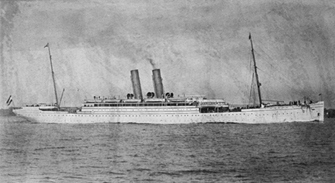|
|

Immigration Possibly, the most used immigration path was from Ruzbach, Saros (presently Stara Lubovna) or Locse/Pal(y)in (presently Levoca) to Poprad by wagon or horse, then by train to either Hamburg or Bremen. Accounts that I have read suggest that the train fare was about $35 (today about $1200 American). Upon arrival at Hamburg or Bremen, the ship passage cost (Steerage) was about $35, also. One needs to wonder how a simple Slovak farmer could come up with $2400! There is some indication that American mine representatives would shop the farm folk looking for someone that would like to find freedom in America. Perhaps they would work off the immigration costs by working in a Pennsylvania coal mine for some agreed upon time! Some of the ship records show as many as fifty people from Saros on the same ship! Now, I do not know how many of you have spent time in a violently rolling ship, but I have. It is not a happy time, I can tell you. Twelve days (one way) in the bilge of a violently rolling steel scow is not Utopia! None of the ships were very large so the rolling must have been memorable (especially during a storm). On a few of the trips, immigrants died. Some handy person could make a lifelong study just trying to understand all of the different motivations that would cause a Slovak family to make the trip. A man named Erskine Caldwell wrote an early book (out of print now, but still available is some libraries) entitled "North Of The Danube". The book helps one understand the times a bit. To date, I have not found a real account of a Hajostek immigrant to shed some light on this subject. Have you? Incidentally, the Danube River in Slovakia is spelled Dunaj and pronounced Deun-eye. |
Steamship Saale Notice that this ship has portholes belowdeck (most did not). Only ten lifeboats (five each side). At fifty passengers per boat, only five hundred passengers protected against drowning. A ship such as this one could easily carry a thousand paying passengers. |